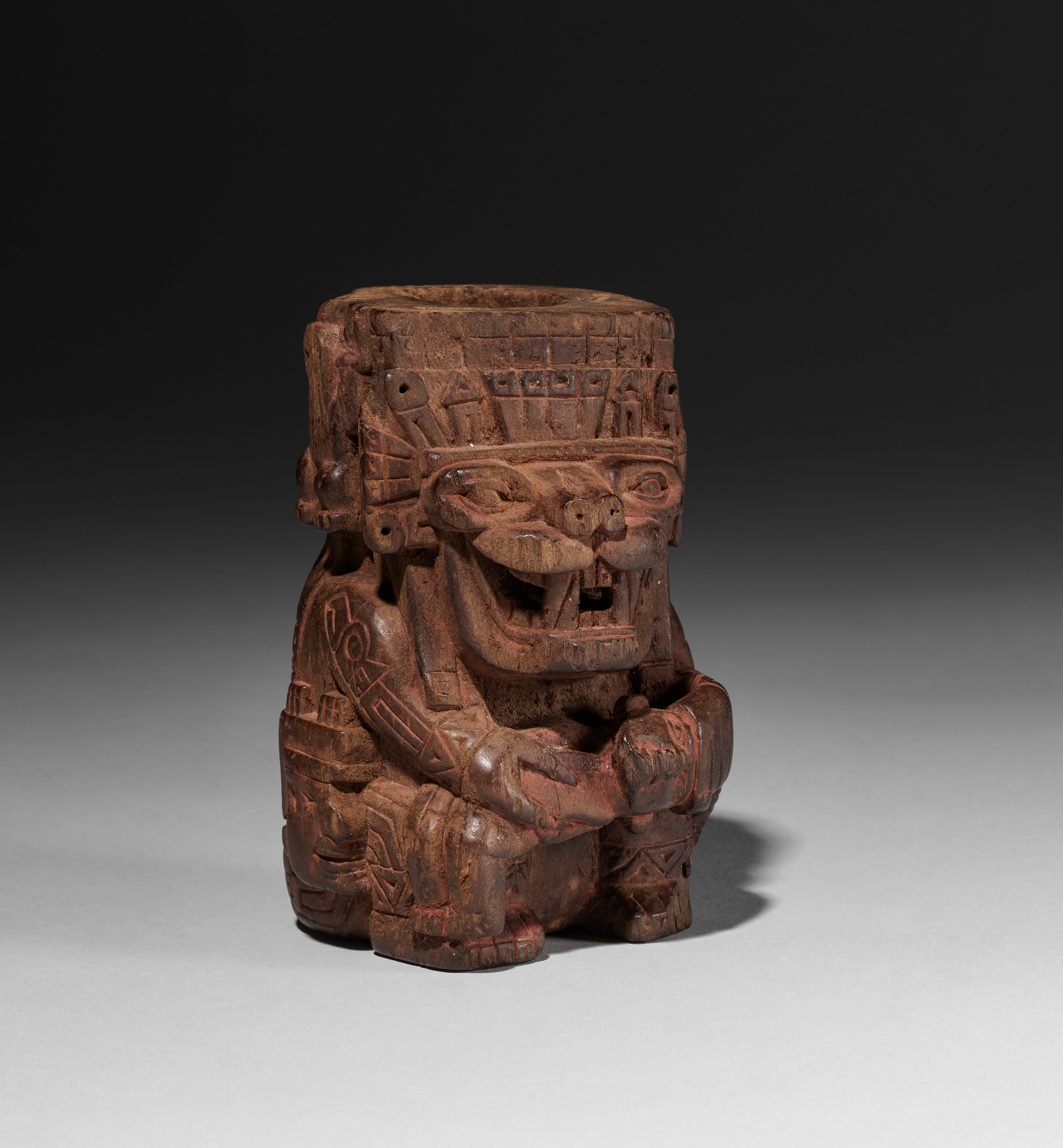The Cleveland Museum of Art
Collection Online as of April 20, 2024

Container in the form of a Sacrificer
770–890 (radiocarbon date, 95% probability)
Overall: 10.8 x 7 x 7.5 cm (4 1/4 x 2 3/4 x 2 15/16 in.)
John L. Severance Fund 2007.193.a
Location: 232 Andean
Did You Know?
Traces of cinnabar, a toxic mercuric sulfide, are visible on the container's surface.Description
This container assumes the shape of a magnificent, feline-headed, supernatural sacrificer who draws a knife across the throat of the human it holds in its lap. Severed human heads hang from the feline's belt and dangle by the trachea at the back of its headdress. Sacrifice had a place in Wari religious practice, probably as an unusual and exceptionally precious offering made to entice the benevolence of cosmic forces. Indeed, colonial-period Andean people believed that death was a prerequisite for the renewal of the world.- ?-1967Erich Stumpf, Austria1967-2000Anton Roeckl, Irschenberg, Germany2007(David Bernstein Fine Art, sold to the Cleveland Museum of Art)2007-The Cleveland Museum of Art, Cleveland, OH
- Cleveland Museum of Art. The CMA Companion: A Guide to the Cleveland Museum of Art. Cleveland: Cleveland Museum of Art, 2014. Mentioned and reproduced: P. 333
- Wari: Lords of the Ancient Andes. The Cleveland Museum of Art, Cleveland, OH (organizer) (October 28, 2012-January 6, 2013); Ft. Lauderdale Museum of Art (February 10-May 19, 2013); Kimbell Art Museum, Fort Worth, TX (June 16-September 8, 2013).The Cleveland Museum fo Art (10/28/2012 - 1/6/2013); Ft. Lauderdale Museum of Art, FL (2/10/2013 - 5/19/2013); and the Kimbell Art Museum, Fort Worth, TX ((6/16/2013 - 9/8/2013): "Wari: Lords of the Ancient Andes"
- {{cite web|title=Container in the form of a Sacrificer|url=false|author=|year=770–890 (radiocarbon date, 95% probability)|access-date=20 April 2024|publisher=Cleveland Museum of Art}}
Source URL:
https://www.clevelandart.org/art/2007.193.a